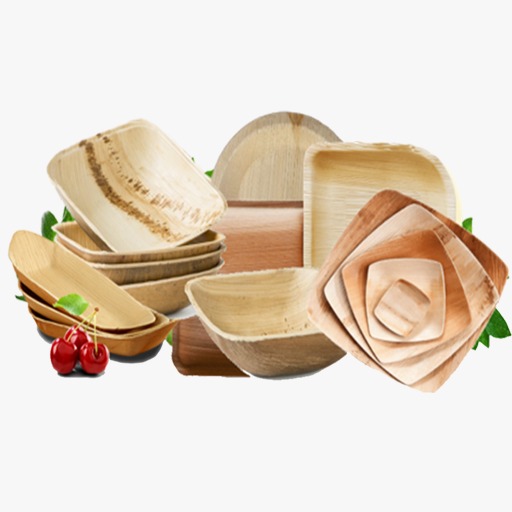
What is eco-friendly tableware?
Eco-friendly tableware is quickly transforming the way we dine, blending sustainability with style. In today’s environmentally conscious world, the demand for sustainable products is soaring. This comprehensive guide explores what eco-friendly tableware is, why it matters, and how it benefits both your business and the planet.
Introduction
As businesses and consumers alike pivot toward greener practices, eco-friendly tableware has become a focal point in the sustainable dining revolution. This innovative range of products is designed to reduce environmental impact without compromising functionality or aesthetic appeal. In this article, we delve deep into the world of eco-friendly tableware, answer frequently asked questions, and provide actionable insights and statistics to help you make an informed decision for your dining space or business.
Eco-friendly tableware offers a perfect blend of practicality and environmental stewardship. Whether you are running a restaurant, organizing an event, or simply aiming to reduce your carbon footprint at home, understanding the advantages of sustainable tableware is crucial. Let’s explore what sets this green dining trend apart and why it deserves your attention today.
What is Eco-Friendly Tableware?
Eco-friendly tableware refers to dining utensils, plates, cups, and serving ware crafted from sustainable, biodegradable, or recycled materials. These products are specifically engineered to minimize environmental harm by reducing waste, lowering energy consumption, and promoting the circular economy. Common materials include bamboo, recycled plastics, bioplastics, and even innovative materials like wheat bran composites.
Key characteristics of eco-friendly tableware include:
- Sustainability: Made from renewable resources or recycled materials.
- Biodegradability: Capable of decomposing naturally, reducing landfill waste.
- Non-toxicity: Free from harmful chemicals, ensuring safety for both consumers and the environment.
- Durability: Engineered to last, making them ideal for both disposable and reusable options.
The Rising Demand: Statistics and Trends
Recent statistics underscore the growing trend towards sustainability in the dining industry. According to Nielsen, 66% of global consumers are willing to pay more for sustainable products. In addition, the global eco-friendly tableware market is projected to grow by over 8% annually, reflecting a significant shift in consumer priorities. This surge is driven by increased environmental awareness, stricter government regulations, and a heightened commitment from businesses to reduce their ecological footprint.
Frequently Asked Questions
What Materials Are Used in Eco-Friendly Tableware?
Eco-friendly tableware is crafted from a variety of sustainable materials:
- Bamboo: Naturally renewable and biodegradable, bamboo is a popular choice due to its strength and aesthetic appeal.
- Recycled Plastics: These tableware options reduce waste and lower the demand for new plastic production.
- Bioplastics: Derived from plant-based materials like corn starch or sugarcane, bioplastics offer a sustainable alternative to traditional plastics.
- Wheat Bran and Bagasse: These by-products from agricultural processes are repurposed to create biodegradable and compostable tableware.
How Does Eco-Friendly Tableware Benefit the Environment?
The benefits of eco-friendly tableware extend beyond aesthetics:
- Reduced Waste: Many products are compostable or recyclable, significantly lowering the volume of waste sent to landfills.
- Energy Savings: Sustainable production methods often use less energy compared to traditional manufacturing processes.
- Lower Carbon Footprint: By utilizing renewable resources, eco-friendly tableware helps decrease overall greenhouse gas emissions.
- Conservation of Natural Resources: Using recycled or rapidly renewable materials conserves natural resources and reduces deforestation.
Is Eco-Friendly Tableware Cost-Effective?
While the initial cost of eco-friendly tableware may be slightly higher than conventional options, the long-term benefits often outweigh the expense. For businesses, investing in sustainable products can enhance brand reputation, attract environmentally conscious consumers, and even lead to cost savings through reduced waste management expenses. Additionally, economies of scale and increased consumer demand are driving prices down, making eco-friendly tableware an increasingly viable option.
Can Eco-Friendly Tableware Compete with Traditional Tableware in Terms of Performance?
Absolutely. Modern eco-friendly tableware is designed to meet the rigorous demands of both commercial and residential settings. Innovations in material science have led to products that are not only aesthetically pleasing but also durable, heat-resistant, and practical for everyday use. Many options are now on par with, if not superior to, their traditional counterparts in terms of functionality and design.
How Can Businesses Transition to Eco-Friendly Tableware?
Transitioning to eco-friendly tableware can be a seamless process with careful planning:
- Conduct an Audit: Evaluate your current tableware usage and waste output.
- Set Clear Goals: Define sustainability targets for your business.
- Source Quality Products: Choose suppliers committed to eco-friendly practices.
- Educate Staff and Customers: Promote the benefits of sustainable dining practices.
- Monitor Progress: Regularly assess your environmental impact and adjust strategies accordingly.
Actionable Insights for Businesses and Consumers
Embrace the Trend with a Green Strategy
Incorporating eco-friendly tableware into your business model is more than just a trend—it’s a strategic decision that resonates with today’s environmentally conscious market. By switching to sustainable options, you position your business as a leader in environmental responsibility, which can boost customer loyalty and enhance your brand image.
Leverage Consumer Demand
A significant portion of consumers now prioritize sustainability in their purchasing decisions. Capitalize on this by highlighting your commitment to green practices. Displaying certifications and eco-labels can build trust and set you apart from competitors. Engaging storytelling about your sustainable journey further strengthens customer connection and retention.
Utilize Data-Driven Marketing
In the competitive landscape of sustainable products, leveraging statistics and data is crucial. Use figures such as the growing market rate and consumer willingness to pay more for green products to back up your marketing claims. This not only enhances credibility but also appeals to a rational, business-minded audience.
Optimize for SEO
To rank high on search engines, integrate high-impact keywords such as “eco-friendly tableware,” “sustainable dining,” “biodegradable tableware,” and “green products” throughout your content. Using these strategically in titles, headings, and the main body will improve your search engine visibility. Additionally, employ meta descriptions, alt text for images, and internal/external links to bolster your SEO efforts.
Foster Community Engagement
Building an online community around eco-friendly practices can exponentially increase your reach. Encourage feedback, host webinars, or create interactive social media campaigns to engage your audience. User-generated content, such as reviews and testimonials, can further validate your sustainable initiatives.
Storytelling: The Journey to Greener Dining
Imagine a bustling restaurant where every detail—from the decor to the table settings—tells a story of sustainability. The owner, a visionary entrepreneur, decides to replace conventional tableware with eco-friendly alternatives. Customers not only appreciate the refined design but also feel proud to be part of a movement that champions environmental responsibility. This transformation not only boosts the restaurant’s reputation but also sets a benchmark for other businesses, proving that sustainability and profitability can go hand in hand.
Conclusion
Eco-friendly tableware represents a pivotal shift in the dining industry, merging aesthetics, functionality, and sustainability. As consumer preferences evolve and environmental concerns take center stage, adopting sustainable dining practices is not just a trend—it’s a necessity. Whether you are a business leader aiming to enhance your brand or a conscious consumer seeking to make responsible choices, eco-friendly tableware offers an actionable solution to reduce your environmental footprint while enjoying top-tier quality.
By embracing these sustainable practices, you not only contribute to a greener planet but also unlock new opportunities for innovation and growth. The journey toward eco-friendly dining is a rewarding one, filled with practical benefits and long-term impact. Make the switch today and be part of the movement that’s redefining dining for the better.







